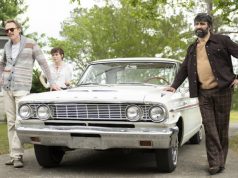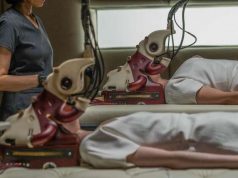In this era of computer animation, the art of claymation — hand-molded figures painstakingly shot one frame at a time — is all but lost. It seems only Aardman Studios, responsible for “Wallace and Gromit” and “Flushed Away,” has continued the practice into the 21st century.
It’s quite a charming throwback, then, to see the Australian film “Mary and Max” use stop-motion photography and astonishingly well-crafted clay figures to tell a bizarre and sweet story. The film would have been odd no matter how it was made; the claymation just adds another layer of daftness.
Adam Elliot, whose 2003 short film “Harvie Krumpet” won an Oscar, is the writer, director, and designer behind the story, which he says is based (rather loosely, one gathers) on fact. We begin in 1976 in the small Australian town of Mount Waverley, where 8-year-old Mary (voice of Bethany Whitmore) is bored and lonely. She has eyes the color of mud puddles and, on her forehead, “a birthmark the color of poo.” Her father enjoys taxidermy. Her mother is an alcoholic, a chronic shoplifter, and a fan of cricket. Mary’s only friend is her pet rooster, Ethel.
On a whim, Mary pulls a page out of the New York City phone book and writes a letter to a random American named Max Horowitz (Philip Seymour Hoffman). She asks him a lot of stream-of-consciousness questions and encloses a chocolate bar. Max, a 44-year-old single man who attends Overeaters Anonymous and enjoys chocolate hot dogs (the recipe: put a chocolate bar on a hot dog bun; eat), lacks social skills and, as a result, friends. Even receiving a letter from an unknown little girl inspires a panic attack. Nonetheless, he replies, offering as many random questions and details (“Have you ever been attacked by a crow, or a similar large bird?”) as Mary did. They are kindred spirits.
The rest of the film, which is narrated with droll omniscience by Barry Humphries, spans some 20 years (a little meanderingly at times) and covers the long-distance friendship between Max and Mary (voiced as an adult by Toni Collette). We learn more about Max’s neuroses, including some diagnosable mental conditions, and it’s rather poignant to see the film — as goofy as it is — deal with those things believably. I would call it a comedy overall, yet there’s real pathos and emotion just below the surface, too.
And the comedy tends toward the dark — almost shockingly dark, actually, with death and other serious events occurring in such a matter-of-fact way that it often took me several seconds to register just what I’d been told. This tone doesn’t always work (sometimes it’s just shocking, not funny), but it definitely adds to the film’s uniqueness. Of all the Australian claymation oddball dramedies to come out in 2009, this is almost certainly the best.
B (1 hr., 32 min.; )





